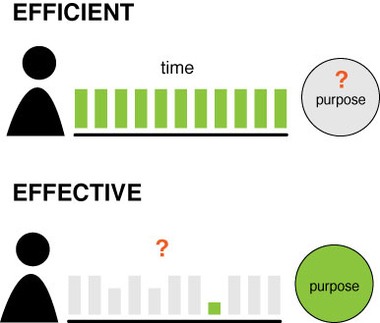This quest involves sharing our unique experiences, learned principles and fundamental leadership lessons. This deliberate personal development is the reason I am writing this article and the reason you are sharing your time with me. This is what will make us more dynamic leaders and increase our chances of success in new roles and challenges. Here are my eight principles of dynamic leadership:
1. Focus on positive change.
Simple change is not positive and is the reason phrases like ‘continuous improvement’ become both white-collar buzzwords and blue-collar jokes. For a change to be positive, it must decrease the time required, increase efficiency, improve structure or increase simplicity. That’s it, simply put. No belt colors, no change coaches, no consulting fees. Every desired or required improvement must meet at least one of these criteria. If it doesn’t, don’t do it.
2. Question everything: yesterday is interesting but irrelevant.
The military has an aspect most businesses do not: frequent 100% manpower turnover. Although many see this as a negative, a dynamic leader capitalizes on it. The welcome-aboard meeting with each new member of your organization should include this simple task: question everything. These two words must be a condition of employment. Empower them to always question the way business is done to find a better way to function. The newness of a job will wear off in six to nine months. Before this happens, ask why the organization does each task the current way. Determine if their fresh, unvarnished opinion can yield positive change. The problem with this tactic is new employees are afraid of rocking the boat in the eyes of current ‘experts.’ For this strategy to be successful, leaders must instill in the culture of the organization a mentality that positive change is vital to the improvement of the team and continued success. Always remember yesterday may have brought you to today, but it most likely will not carry you through tomorrow. Embrace new ideas, new methods, and always question the assumptions that define your business model.
3. Don’t be a ninth letter leader.
Caution must be used with ‘I, me, mine’ terminology by leaders. These words are the natural selection of many individuals and can unintentionally offend others. When building a culture of teamwork, these three singular personal pronouns interject individualism and possessiveness. Instead, dynamic leaders maximize the use of ‘we, us, our’ phrases. They allow the development of a mutual solution where all parties believe in shared success. To fully understand the power of this concept, count the times people use I, me and my in their daily exchanges. Now, think how the topic might be received differently if every one of those individually possessive words were replaced with the team building terms we, us and our. This simple pronoun change creates a side-by-side stance, drawing attention to common interests and shared effort. This subtle point, a simple strategy, will greatly influence team building and help build your case as a win-win instead of win-lose. Don’t be overly possessive; if ‘I’ take credit for a success, it does not build ‘Us’ as a team. Do you overuse the ninth letter of our alphabet…the letter ‘I’?
4. Know the true measure of leadership is not found in an individual, but the individuals developed.
Never value your success as a leader over that of the individuals you lead. Your primary job as a leader is to develop your replacement, to put yourself out of a job.
5. Be efficient effectively.
6. Time is of the essence.
Time is the most critical resource of every organization, each individual and all leaders. Next time a meeting starts 15 minutes late, look around the room and count your team members. Think of what could have been done in that wasted time. Think of the average hourly wage for the room. Do the math of how much your tardiness cost the company in real dollars, then add the frustration endured by your team (which is priceless). Personally, I am writing this post in my notebook. It looks like I am taking incredible notes as I frequently look up to give my best, active-listening, head-nod acknowledgment and make direct eye contact with the speaker. We are entering hour four of a two-hour meeting with 29 of my peers and supervisors. Fortunately, I am capitalizing on this time by putting my thoughts and frustrations on paper. Unfortunately, this has crippled our staff and made today a total loss. It will take us at least three days to get our head back above water and take a breath because 26 onlookers were forced to watch a conversation by four individuals. By my rough calculation, this meeting cost us $9072 without even factoring in the opportunity cost! A dynamic leader always weighs risk/reward or cost/benefit for every action/inaction. A dynamic leader values everyone’s time the way they want theirs treated.
7. Indecision is still a decision.
A leader is continually asked to make decisions with incomplete and variable data sets. The choices many times are not right or wrong, but differing degrees of good enough with conflicting second and third order effects. This draws many leaders into analysis paralysis where a decision is delayed into nonexistence because of the continual search for a perfect solution. A dynamic leader knows their worth is determined by their ability to properly analyze situations and take deliberate, calculated risks to move the team forward.
8. Leadership is a process not a position.
A dynamic leader yearns for knowledge, for experience, to improve their leadership skill set. They realize leadership is not defined by the title on the door, but daily actions. A dynamic leader grows daily and learns as much as possible from every conversation, meeting, interaction and experience. A dynamic leader knows anything is possible. Please help me add to this list in the comments below. Featured photo credit: Olivier Carré-Delisle via flickr.com
